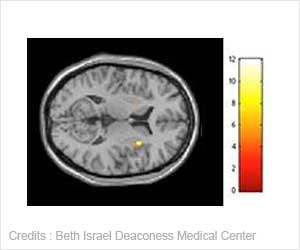Report says higher concentrations of clusterin, a protein in the blood plasma, appears to be associated with the development, severity and progression of Alzheimer's disease

Madhav Thambisetty, M.D., Ph.D., of Institute of Psychiatry, King's College London, and colleagues used a combined proteomic and neuro-imaging approach to identify plasma proteins associated with Alzheimer's disease pathology. Participants in two studies—some with Alzheimer's disease, some with its precursor mild cognitive impairment and some with no dementia—underwent standardized clinical assessments and brain imaging scans. Their blood plasma was then assessed for proteins that may be associated with Alzheimer's disease.
Based on findings of two "discovery phase" studies in 95 patients, one protein, clusterin, appeared to be associated with atrophy of the hippocampal region of the brain and with rapid progression of cognitive decline. The researchers then studied clusterin levels in all 689 participants (including 464 with Alzheimer's disease) and found an association between higher plasma levels of the protein and severity of disease, rapid clinical progression and atrophy in the brain area known as the entorhinal cortex, which plays a role in memory. In addition, increased clusterin levels in the plasma were associated with having more amyloid-beta—which forms the brain plaques associated with Alzheimer's disease—in the brain's medial temporal lobe.
According to the authors, "previous studies suggest that clusterin belongs to a family of extracellular chaperones," proteins that regulate the formation and removal of amyloid. "Although these findings do not support the clinical utility of plasma clusterin concentration as a stand-alone biomarker for Alzheimer's disease, they reveal a robust peripheral signature of this amyloid chaperone protein that is responsive to key features of disease pathology."
"Our findings clearly implicate clusterin, but there may well be other proteins in plasma related to the disease process, and indeed our previous studies and those of others suggest this is the case," they conclude. "These results may have wider implications for the identification of other amyloid chaperone proteins in plasma, both as putative Alzheimer's disease biomarkers as well as drug targets of disease-modifying treatments."
 MEDINDIA
MEDINDIA



 Email
Email








